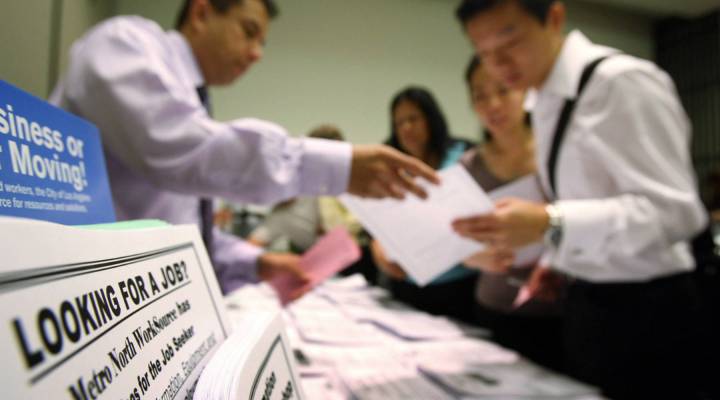
U.S. employers add 148,000 jobs, unemployment rate stays at 4.1 percent
Share Now on:
U.S. employers add 148,000 jobs, unemployment rate stays at 4.1 percent

This story was last updated at 8:39 a.m. CT.
U.S. employers added 148,000 jobs in December, a modest gain but still enough to suggest that the economy entered the new year with solid momentum.
The unemployment rate remained 4.1 percent for a third straight month, the lowest level since 2000, the Labor Department said Friday.
For all of 2017, employers added nearly 2.1 million jobs, enough to lower the unemployment rate from 4.7 percent a year ago. Still, average job gains have slowed to 171,000 this year from a peak of 250,000 in 2014. That typically happens when the unemployment falls to ultra-low levels and fewer people are available to be hired.
While modest, the job gains underscore the economy’s continued health in its ninth year of recovery. The unemployment rate for African-Americans dropped to a record low of 6.8 percent.
Solid economic growth in both the United States and major countries overseas is supporting more hiring. Factory managers received the most new orders in December than in any month since 2004. Retailers have reported strong holiday sales. Builders are ramping up home construction to meet growing demand.
Sales of existing homes reached their fastest pace in nearly 11 years in November. Consumer confidence is at nearly a 17-year high. And the Dow Jones industrial average reached 25,000 for the first time on Thursday.
Most economists expect the Trump administration’s tax cuts to help speed the economy’s already decent pace of growth. Some envision the unemployment rate dropping as low as 3.5 percent by the end of 2018. A rate that low would mark the lowest such level in nearly a half-century, and it would likely force businesses to accelerate pay raises to attract and retain employees. Pay raises have remained puzzlingly sluggish for many U.S. workers despite the robust job market.
Some businesses, though, are already howling that they can’t find enough qualified people. There are roughly 6 million available jobs, near a record high, according to government data. Should unemployment fall to 3.5 percent, those complaints will intensify.
“More and more people are searching for jobs using terms like ‘no background check.’ People who might have thought they were shut out of the job market are looking for jobs,” Jed Kolko, chief economist for Indeed.com, told Marketplace in an interview. “Firms may now be starting to look beyond the workers they usually look at, and might start loosening some of the qualifications they need for jobs, because the labor market is getting tighter.”
Labor shortages may increase employers’ reliance on automation.
“What you’re going to see is a move towards a substitution of technology for labor in order to make up those gaps,” said Joe Brusuelas, an analyst at consulting firm RSM. Brusuelas added that he expects employers to invest some of the cash they get from new corporate tax cuts on labor-saving automation.
For at least two years, economists have been expecting the falling unemployment rate to boost wages. Though average hourly pay growth has picked up a bit, it remains about 1 percentage point below the 3.5 percent annual gain that typically occurs in a healthy economy.
Economists point to several trends that may be keeping a lid on wage gains.
As the vast baby boom generation ages — 10,000 of them are turning 65 every day — they are retiring and are being replaced by younger workers, who typically earn far less money. That is likely suppressing overall wage growth, economists say.
Worker pay also depends on productivity, or how efficient employees are. And productivity has been weak for roughly a decade.
In 2000, the last time the unemployment rate fell this low, wages were growing at a 4 percent annual pace. But productivity, which measures workers’ output per hour, was much higher then. A falling unemployment rate can force up pay, but rising productivity has a much greater effect.
Many businesses, meanwhile, feel they have limited ability to pass on higher wages to consumers in the form of higher prices. Online shopping and cheaper imported goods make it easier for consumers to find bargains. That leaves retailers and other firms reluctant to raise pay.
| The U.S. adds 228,000 jobs in November |
| Why you should care about the government’s economic data |
| People who have jobs are searching for better ones … in Hawaii |
There’s a lot happening in the world. Through it all, Marketplace is here for you.
You rely on Marketplace to break down the world’s events and tell you how it affects you in a fact-based, approachable way. We rely on your financial support to keep making that possible.
Your donation today powers the independent journalism that you rely on. For just $5/month, you can help sustain Marketplace so we can keep reporting on the things that matter to you.


















